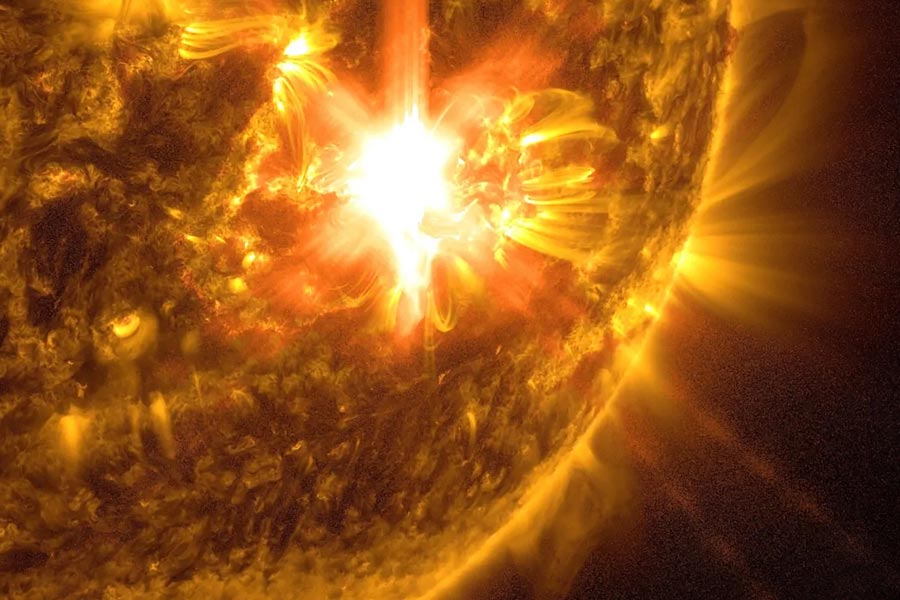A powerful solar storm impacted Earth in early May 2024, triggered by the highly active region AR13664 in the Sun, ISRO said on Tuesday.
This region unleashed a series of X-class flares and Coronal Mass Ejections (CMEs) directed at Earth.
According to ISRO, the resulting geomagnetic storm was the most intense since 2003, causing disruptions to communication and GPS systems.
"This is the biggest geomagnetic storm since 2003 in terms of its strength, as the flaring region on the Sun was as big as the historically important Carrington event that took place in 1859," ISRO said in a statement.
Multiple X-class flares and CMEs have hit the Earth in the past few days, the space agency said.
"This (CME) had severe effects over high latitudes where trans-polar flights are already being reported to get diverted. More events are expected in the next few days," ISRO noted.
The space agency said that the Indian sector got less affected as the main event of the storm happened in the early morning of May 11, when the ionosphere had not developed fully.
Also, being at lower latitudes, widespread outages haven't been reported in India.
The Ionosphere was very turbulent over the Pacific and American sectors, ISRO said.
The Ionosphere is part of the Earth's upper atmosphere, between 80 and about 600 km where extreme ultraviolet and x-ray solar radiation ionises the atoms and molecules, thus creating a layer of electrons.
The ionosphere is important because it reflects and modifies radio waves used for communication and navigation.
The main punch of this event so far arrived in the early morning hours of May 11 in India, when the Ionosphere was not fully developed, ISRO said.
ISRO said it has mobilised all its observation platforms and systems to record the signatures of this event. Both Aditya-L1 and Chandrayaan-2 have made observations and signatures have been analysed.
"The ASPEX payload on-board Aditya-L1 is showing high speed solar wind, high temperature solar wind plasma and energetic ion flux till now," the space agency said.
Except for the headline, this story has not been edited by The Telegraph Online staff and has been published from a syndicated feed.










